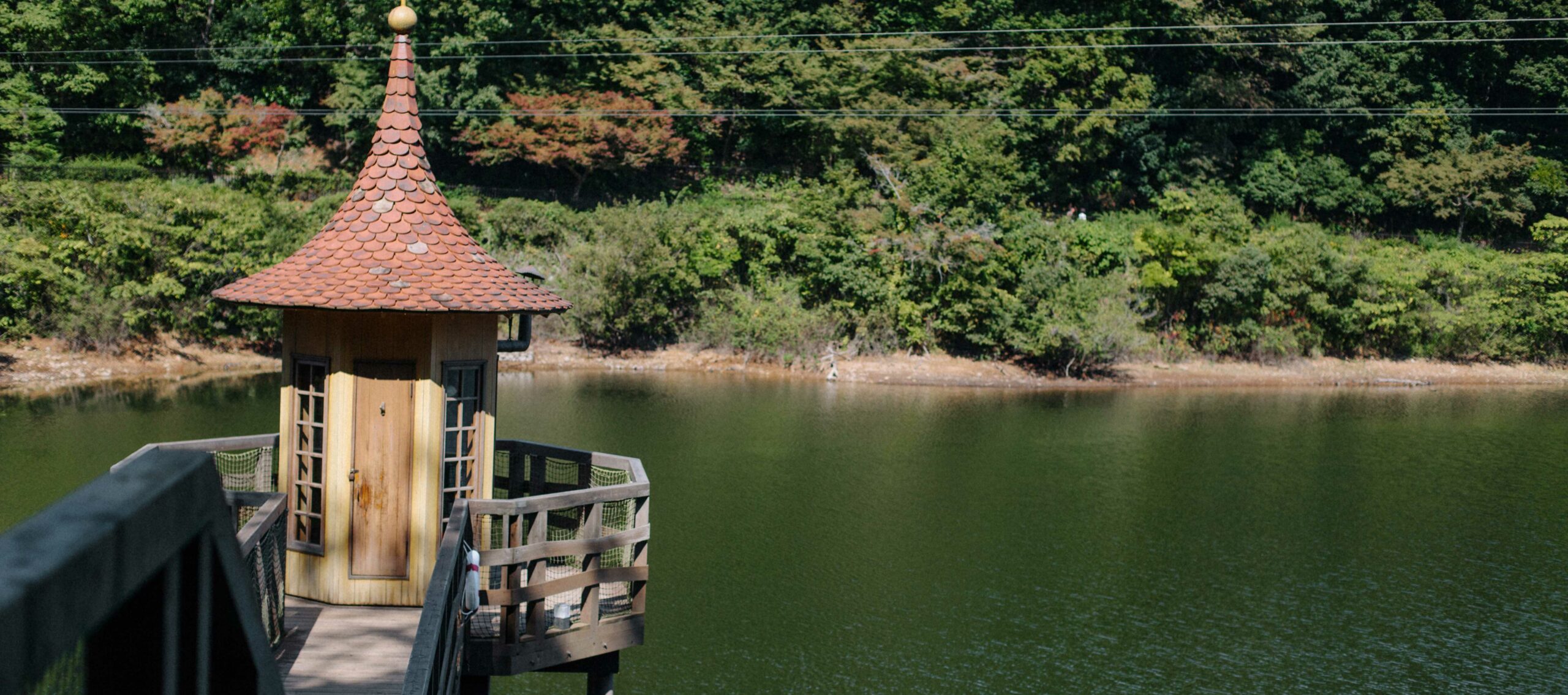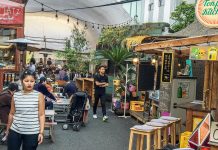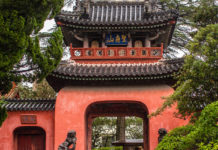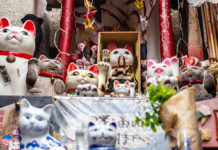Far away from Tokyo (actually, only 40 minutes on the Seibu train line) in the shadow of the Lonely Mountains (in fact, a small hillside city named Hanno) sits a blue barrel-shaped house with a red roof and white windows. Complete with a lakeside hut and a tiny lighthouse, it’s almost impossible to be mistaken; you’ve arrived in Moominvalley.
There are plenty of people who may not have grown up on a steady diet of all things Moomin; but taking into account the expanse of their reach and enduring popularity, most of us are at least familiar with the Moomins. This family of little trolls and their supporting cast of endearing friends and acquaintances were brought into the world by the indomitable Tove Jansson, a Swedish-speaking Finn of many creative talents. Originally characters in a children’s book series beginning in the 1940s, and featured in a long-running comic strip from the 1950s, the Moomins once again captured the hearts of a new generation of children in the 1990s with the release of a Japanese cartoon series, re-telling the legendary exploits of this whimsical family.
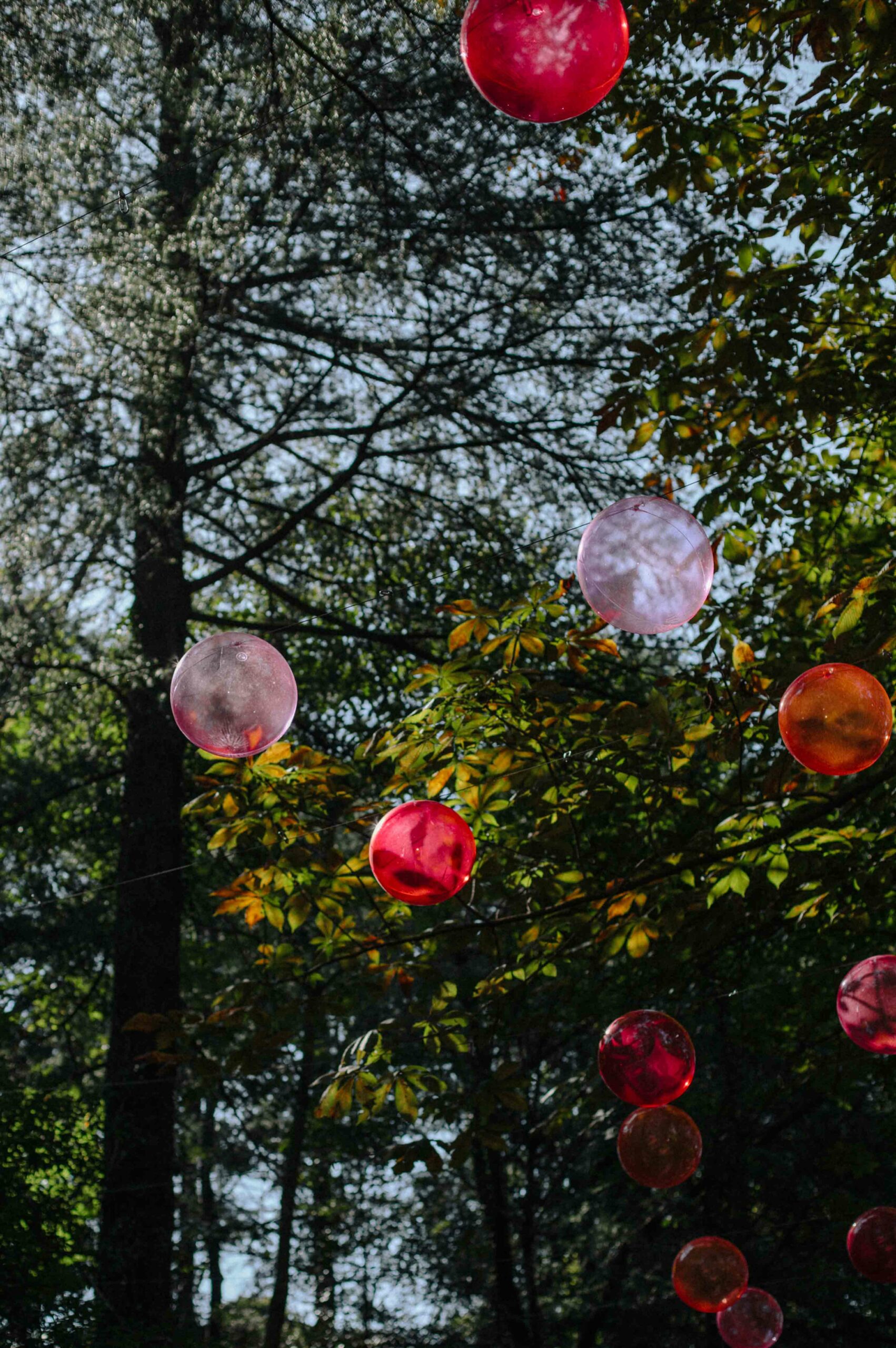
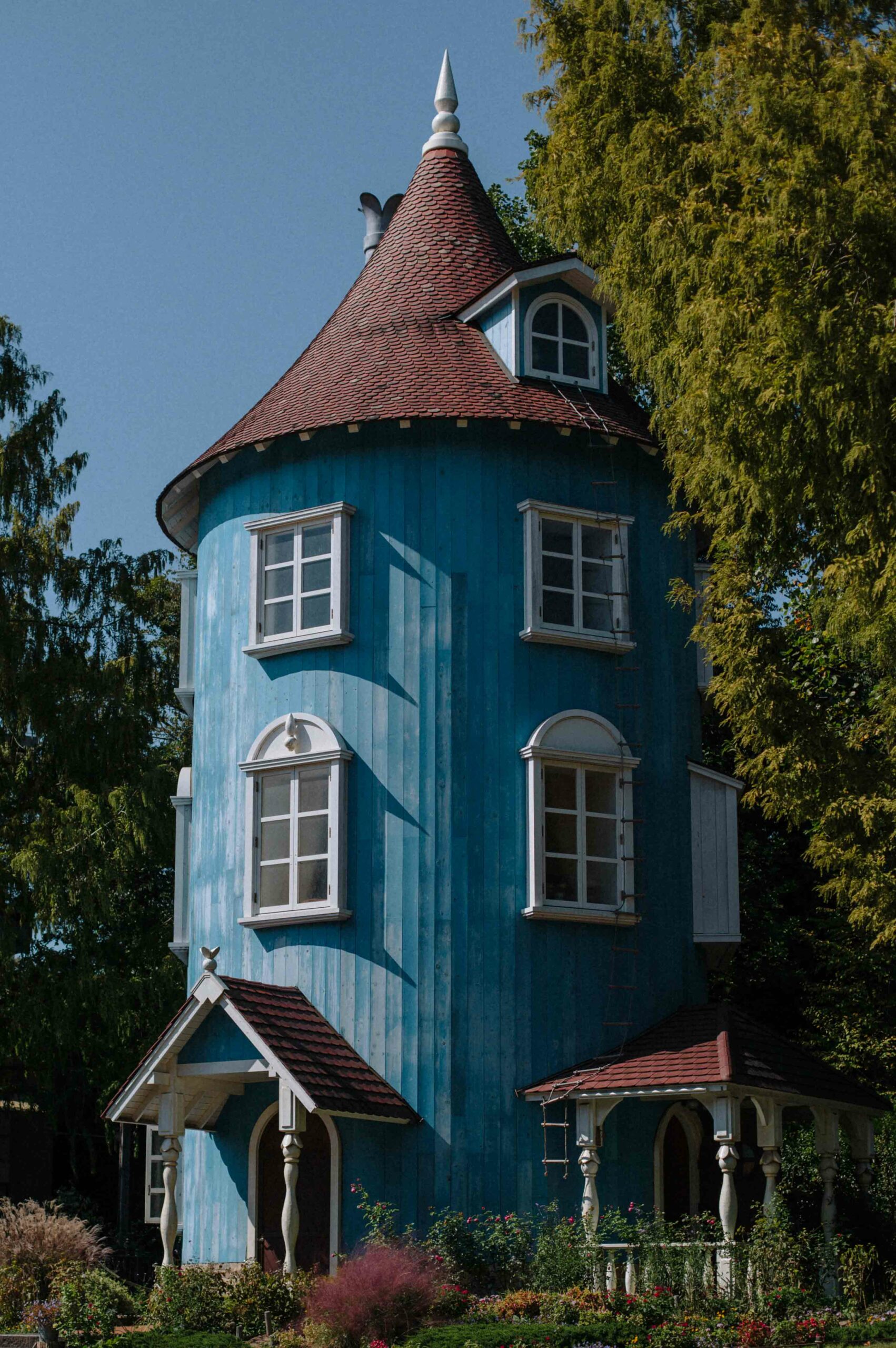
The visual identity of the 1990s iteration of The Moomins was, reportedly, the version which Tove Jansson herself felt was closest to the world she had created in her comics and illustrated books. Since their inception in the 1940s, the Moomins have become far larger than the sum of their parts. Battling through floods and comets with kindness and good grace, they have provided a platform for Jansson’s dry humour, dark wit, and philosophical outlook on life’s myriad joys, woes, challenges, and opportunities.
Whether Moomins entered your life as comic strips, stop-motion puppets, or whimsical cartoons, at some point you’ve probably wished that Moominvalley was real. And now, finally, it is! The Metsä Hanno Moominvalley Park in Saitama is actually a ‘sister park’ to the Moominvalley park in Finland’s Naantali archipelago. While both are very similar, Japan’s park includes an on-site museum and gallery of both the Moomins, and Tove Jansson’s wider life and work. This makes the Moominvalley Park an ideal day out for families with kids, or adults who just love the Moomins and Tove Jansson.
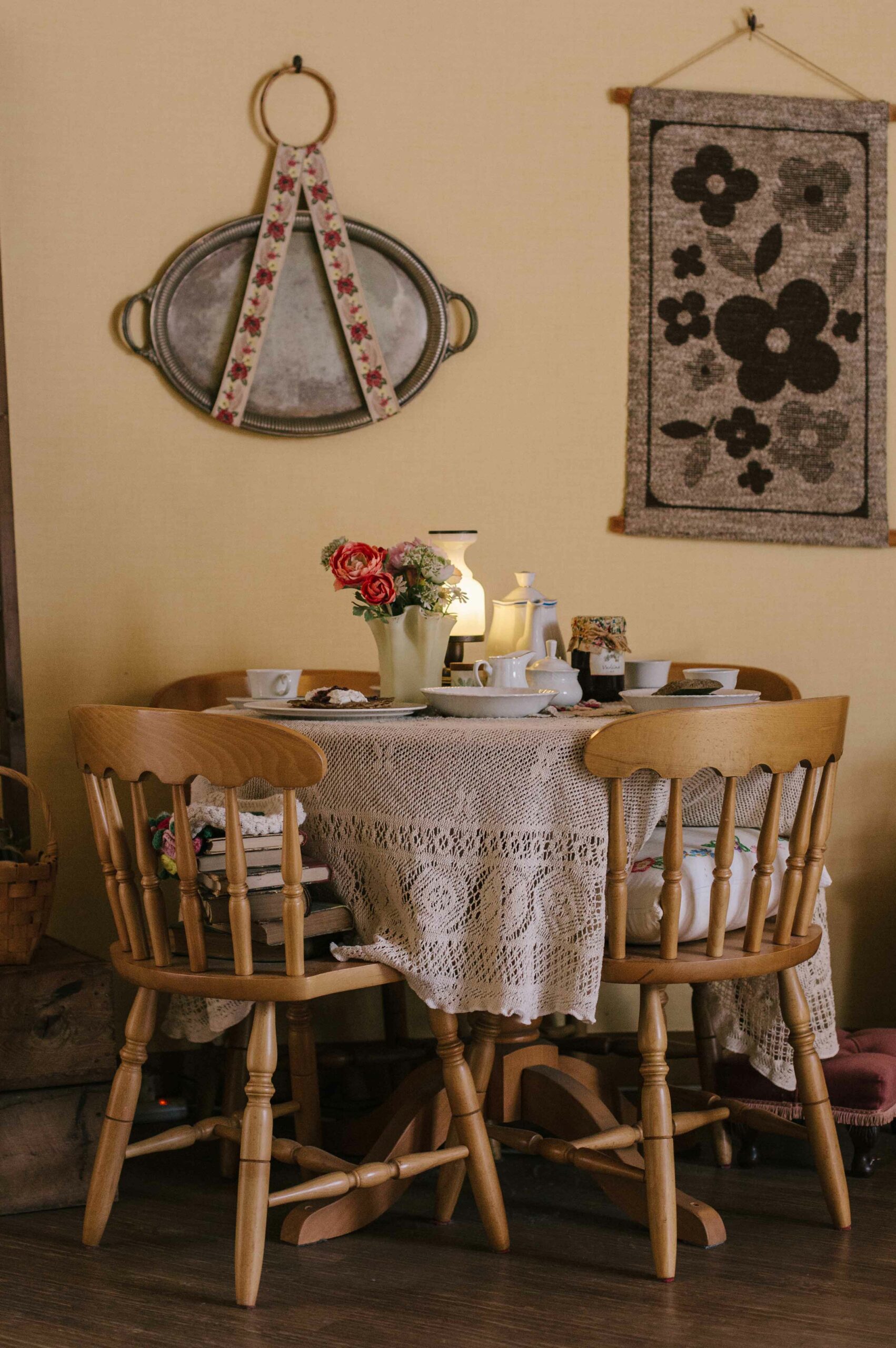
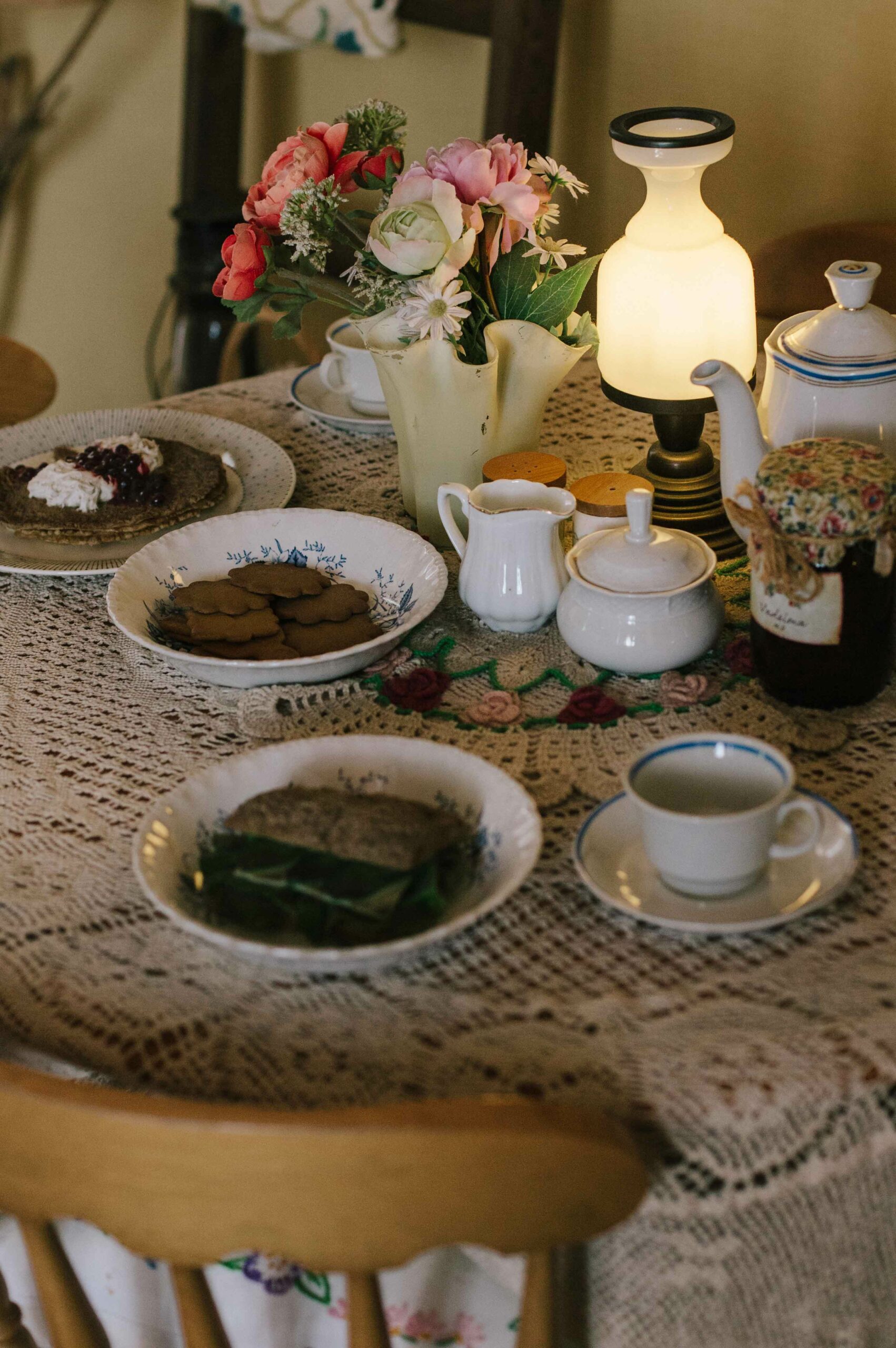
Arriving at the park, you’ll first walk along a road with ‘forest music’ piped through hidden speakers into the ‘Metsä Village’: a Nordic-themed retail park offering clothing, homewares, souvenirs and food. While it’s hard to pin down the exact reason for Japan’s fully reciprocated adoration of Finland (sauna culture? Introversion?), the Japanese habit of paying attention to detail is fully realised through the Metsä Village. As well as a large retail centre, it has Nordic ‘summer house’ style cafés, which overlook a boating lake flanked by fir and birch trees.
Passing by Metsä Village, you’ll follow the edge of the lake through mixed woodland until you reach the Moominvalley Park entrance. After purchasing tickets, continue following the lakeside path, or dive into the first of many souvenir shops. It wouldn’t be unfair to take a cynical view of the sheer number of retail opportunities at Moominvalley Park, as merchandise is the machine that now drives the Moomin empire. However, enough of the park is lovingly crafted and heartfelt in its atmosphere to quickly be forgiven for the army of plushies at every corner.
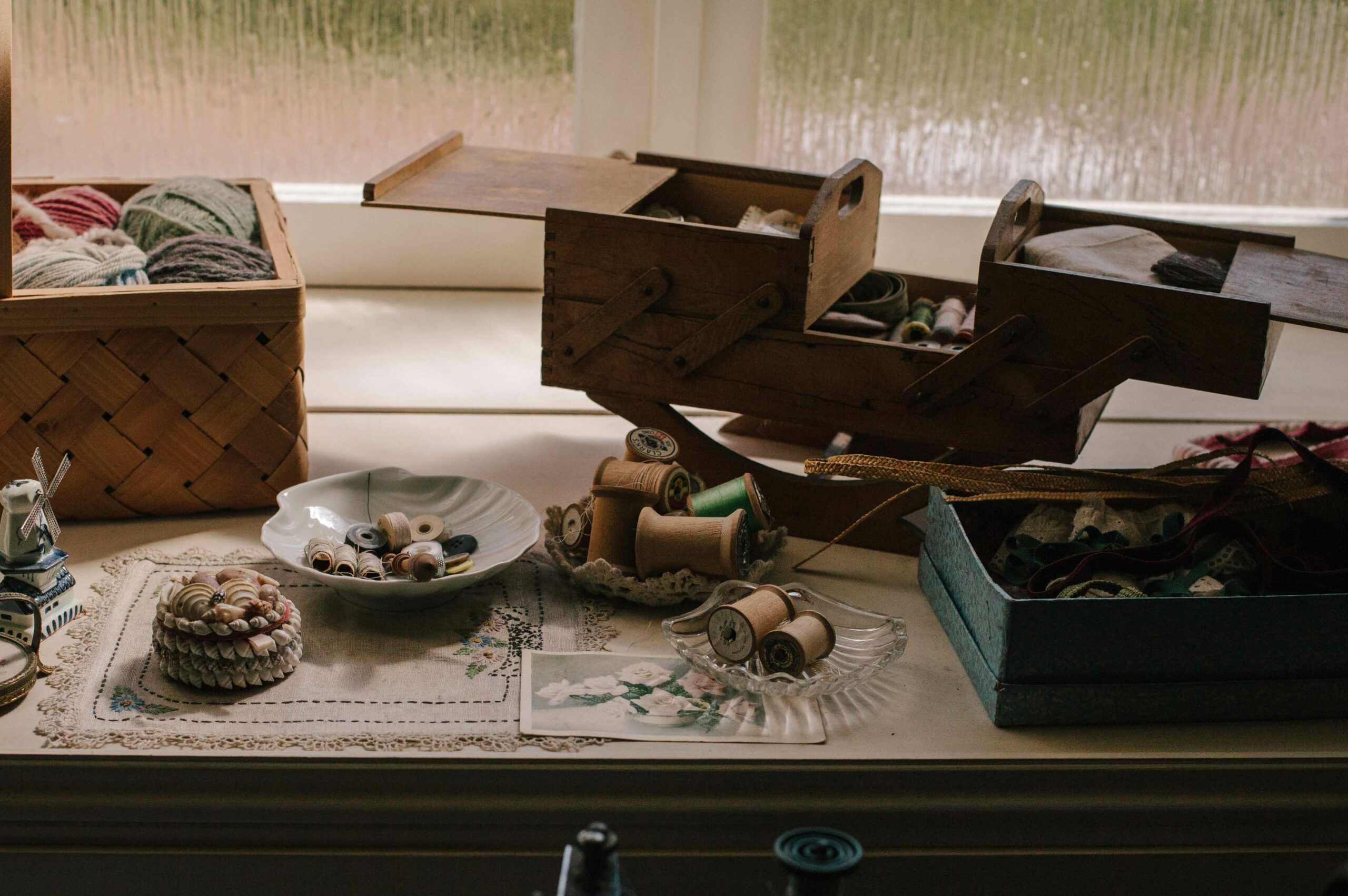
Entering the centre of the park, Emma’s Theatre (from Moominsummer Madness, 1954) is situated to your left, with the blue Moomin House directly ahead. It may already be too late to contain your inner child as you run, screaming, towards this impossible haven – but be sure to stop at the little wooden bridge that crosses the stream where Moomin and Snufkin would often sit in Jansson’s illustrations. Throughout the day, Emma’s theatre hosts a dance-along for children, with park staff suited up in full-body Moomin character suits.
If you’re with younger kids, it’s worth visiting the purpose-built cinema, constructed to look like a galleon in scaffolding. The performance tells the tale of the ‘Oshun Oxtra (Ocean Orchestra ship)’ from The Exploits of Moominpappa (1950), and is a hybrid of immersive physical and 3D-screen theatre. The production is in Japanese, but the experience is engaging enough that non-Japanese speakers can understand and enjoy the story and atmosphere. It’s vital to know that the performance contains flashing lights and rapid strobe effects throughout, and may not be suitable for some visitors.
Next to this, and again ideally suited for small children, is ‘Little My’s Playhouse’: an indoor space designed to look ‘oversized’, like the world according to Little My. If the weather is too hot or rainy to be outdoors, the playhouse, cinema and Kokemus museum still offer a day of adventure for everyone.

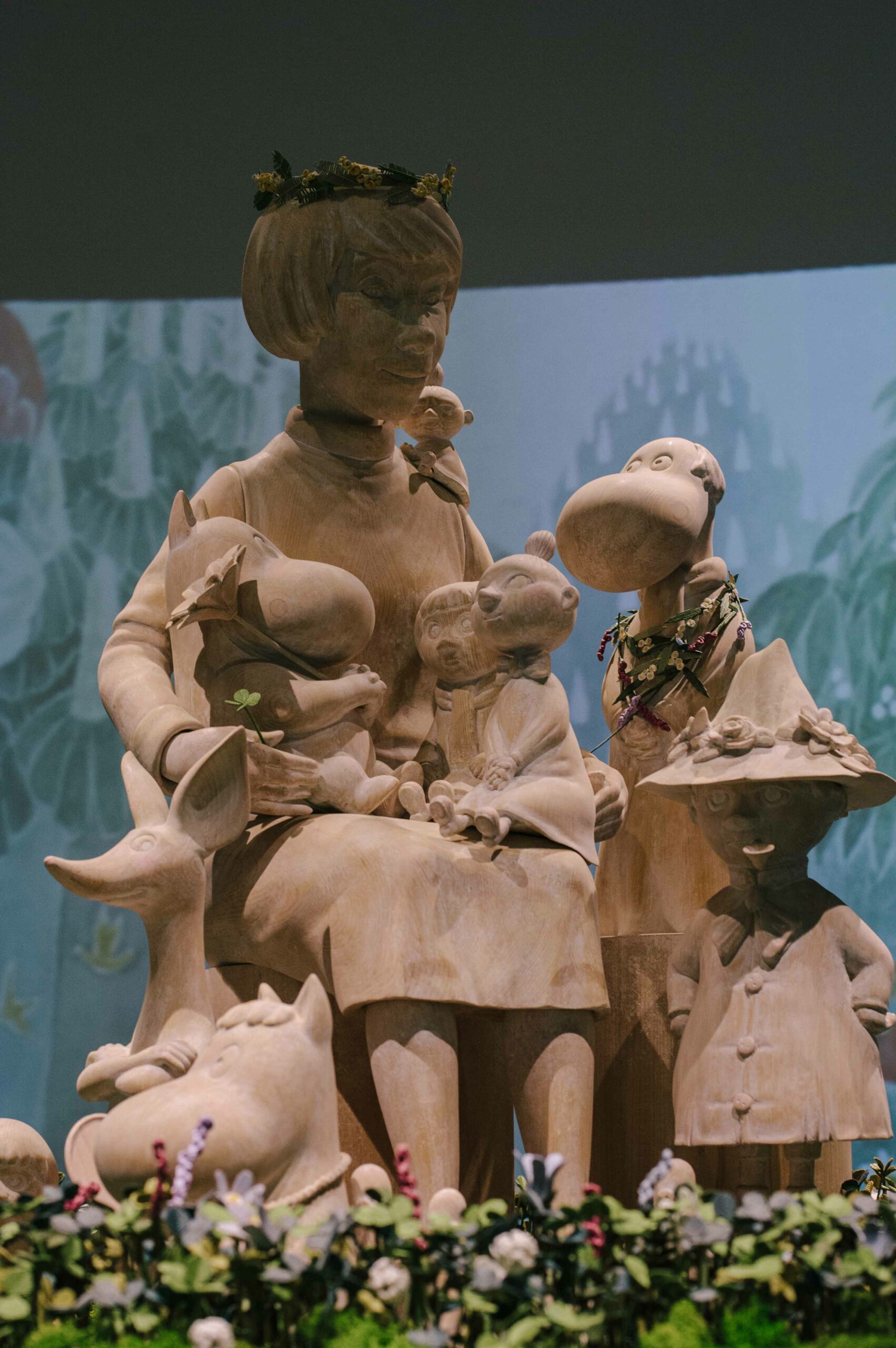
Of course, the highlight of the park is the cylindrical blue Moomin house. It’s as faithfully reimagined on the inside as it is on the outside, and if you visit on a quiet day (a weekday during school term time), you won’t need to wait for long (or at all) to go inside.
Access to the interior of the Moomin house involves a timed, guided tour with small groups of people. There are three floors and a basement level, with only one staircase, meaning people must go up and down before the next group can enter. The tour is given in Japanese, but as long as you follow the group – head upstairs only when others in your group do so, and back down when everybody else leaves – you’ll be fine.
For northern European visitors, the house’s interior barely needs explaining; it’s a heartfelt and lovingly-made replica of an archetypal ‘grandmother’s cottage.’ Genuine furniture pieces from between the 1920s (manual Singer sewing machines) and 1950s (walnut wood linen cupboards) adorn each room. A sewing basket sits open on the windowsill, full of familiar brands of threads and fabrics. The floral curtains, bedside lamps, faded pink bedspread, jam and cookies on a lace tablecloth – all of it evokes a powerful sense of nostalgia. Immense care has been taken to create this place, and it feels like stepping back into a time that no longer exists. Bring tissues, and prepare to tell people that the watery eyes are ‘just hayfever.’
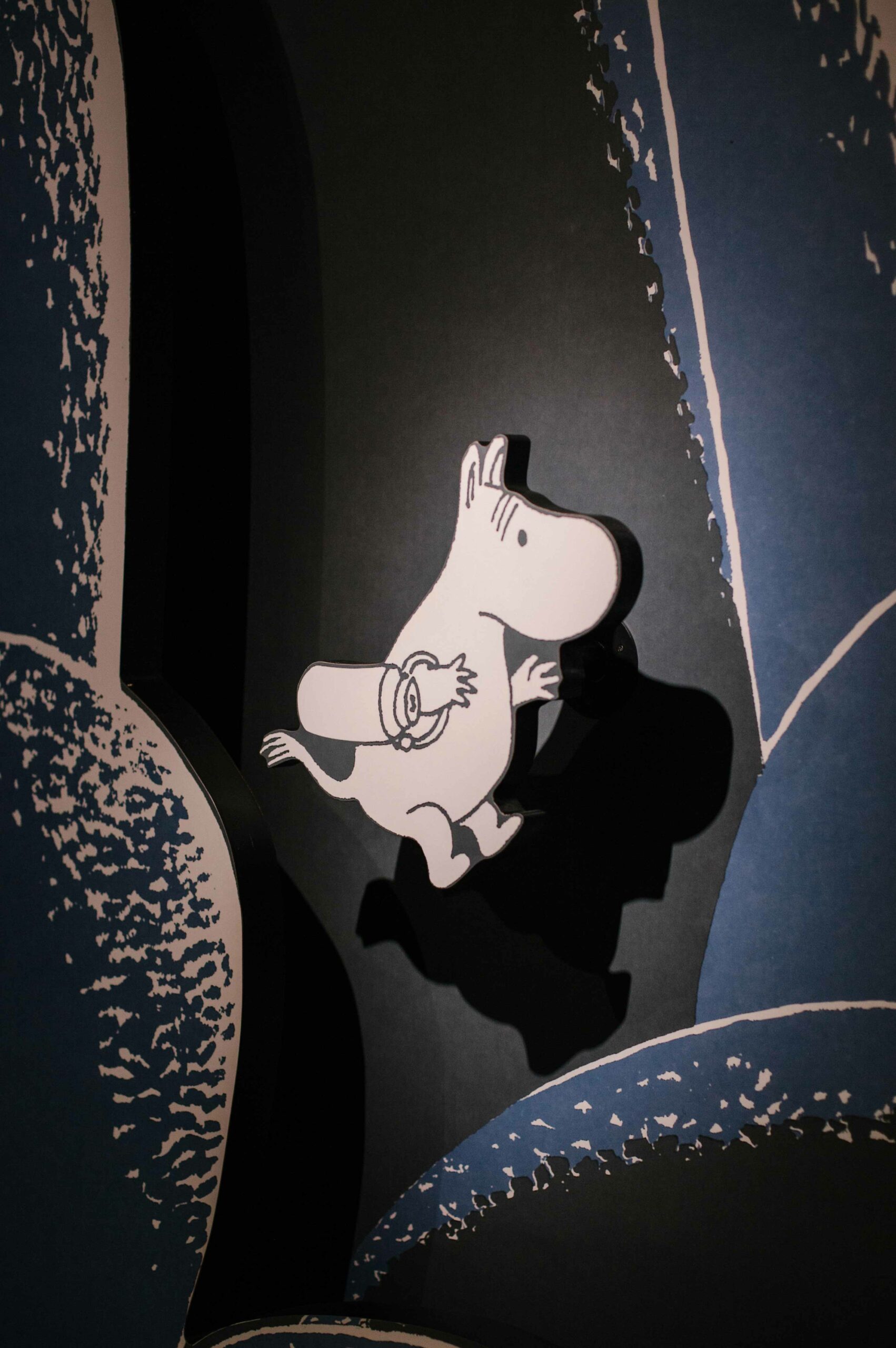
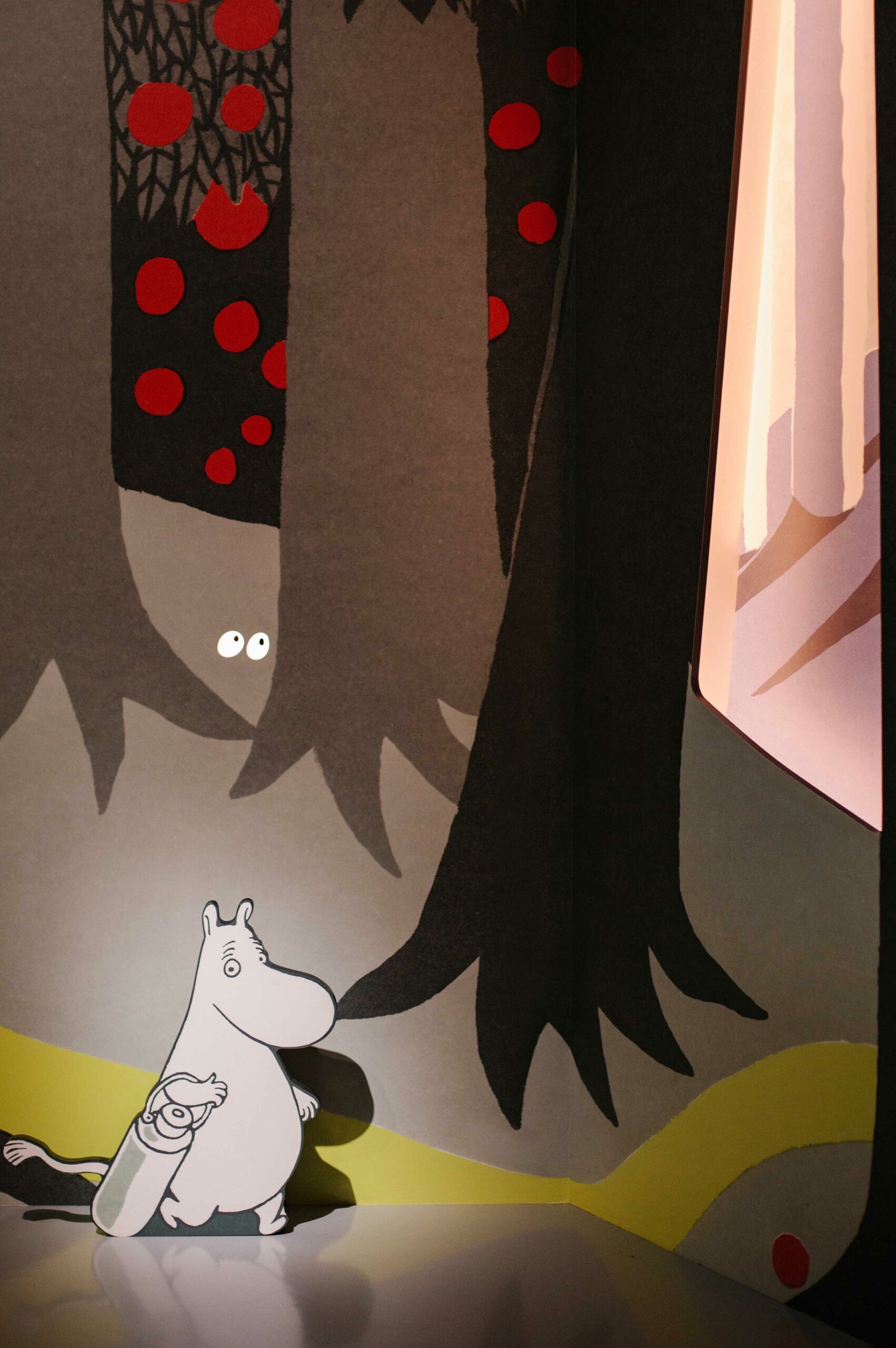
Heading back outside, you can stroll along a lakeside path, past several themed gift shops and towards a miniature lighthouse. From here, ascending steps through the hillside forest will bring you to a huge outdoor play area, named The Hemulen’s Park. It’s an outdoor jungle-gym type building, constructed of wood and rope, with an abundance of things to climb and swing from.
If you turn right when exiting the Moomin house, you’ll come to ‘Kokemus’ – the park’s main building, which houses a restaurant, the largest gift shop, and the entrance to the Moomin and Tove Jansson museum, which covers multiple floors. The best order in which to view the museum is from top to bottom; head down a long corridor, past a wooden statue of Tove and her cast of characters, to ride the elevator to the top floor. Here, you’ll find a literary adventure space, in which “The Book about Moomin, Mymble and Little My” has been constructed to fill an entire hall, making you a part of the adventure. Follow the paths (or break the rules and do it all backwards) to explore the book’s new and gigantic scale, as you join Moomin and Mymble in search of Little My.
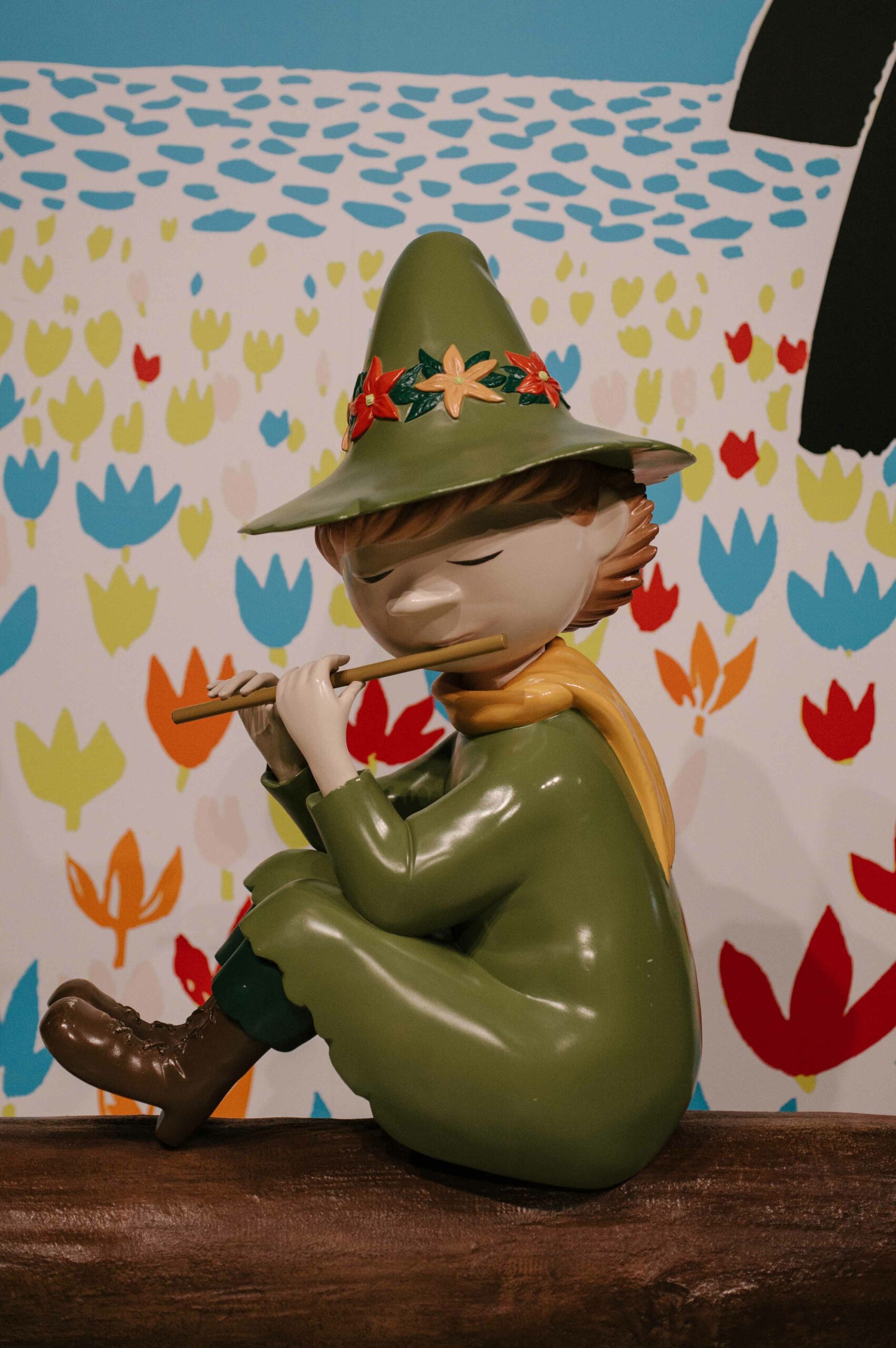
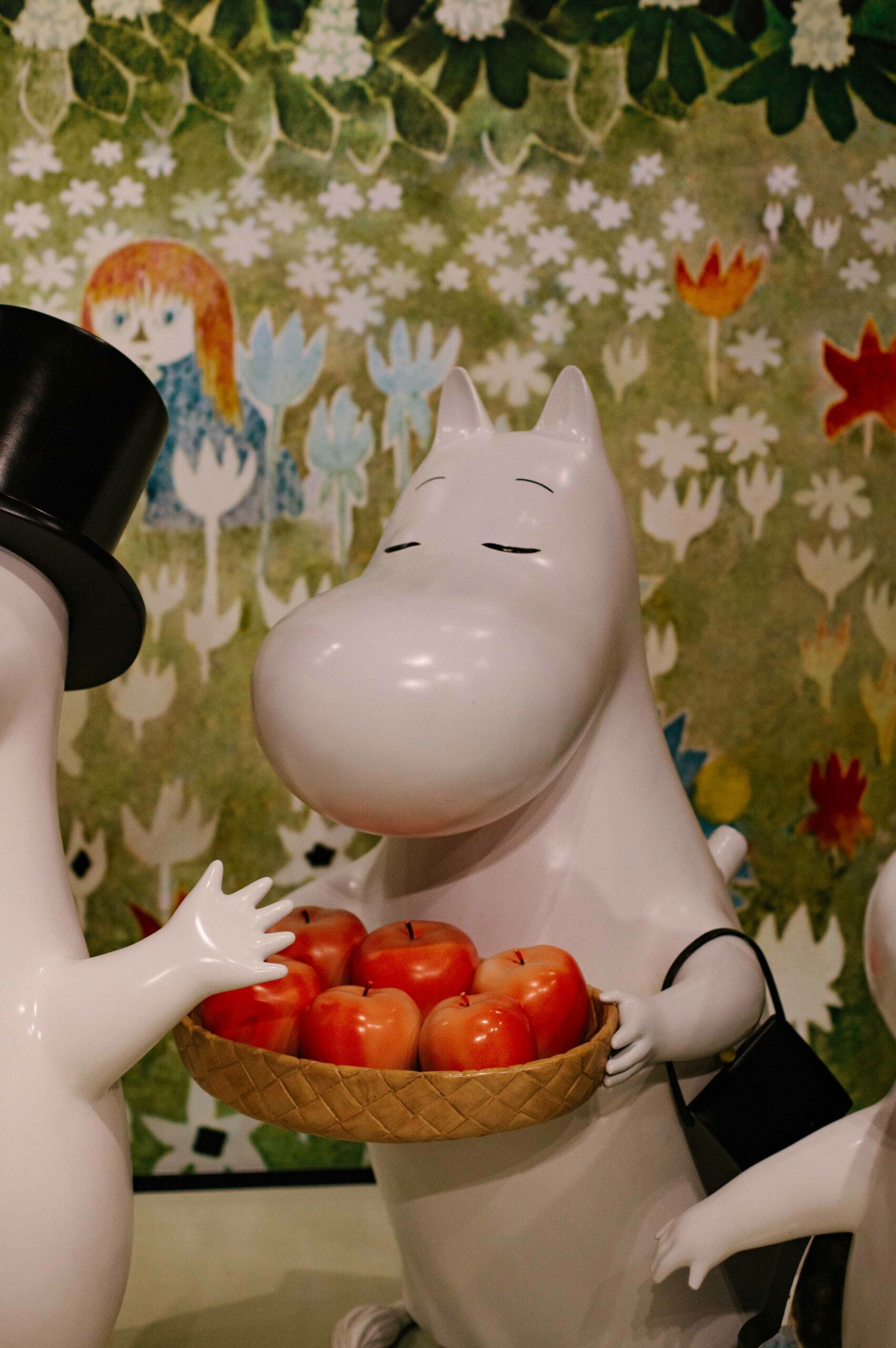
When you’ve come to the end of your quest for little My, you’ll arrive at an area populated with life-size statues of the entire Moomin family (including Sniff, Snufkin, and even the Groke). They’re arranged artfully against reproductions of Tove Jansson’s hand-painted scenery, making an ideal photo opportunity for kids and adults alike. Next to the photo zone, and wrapping back around the entire top floor is a soft-play course, complete with padded ramps and slides, aimed at toddlers and babies. The entire room is an immersive world, with lights and decorations creating a vibrant and enchanting atmosphere.
On the next floor down, you’ll come to the Moomins & Tove Jansson museum and gallery: an enormous space dedicated to the Moomin books and comics and the myriad characters created by Jansson throughout her life. Here, you can handle interactive comic strips and view philosophical excerpts from her Moomin novels. These are written in English and Japanese, and the curation offers a chance to truly appreciate the thought-provoking nature of Jansson’s work, made accessible to all through the medium of Moomin.
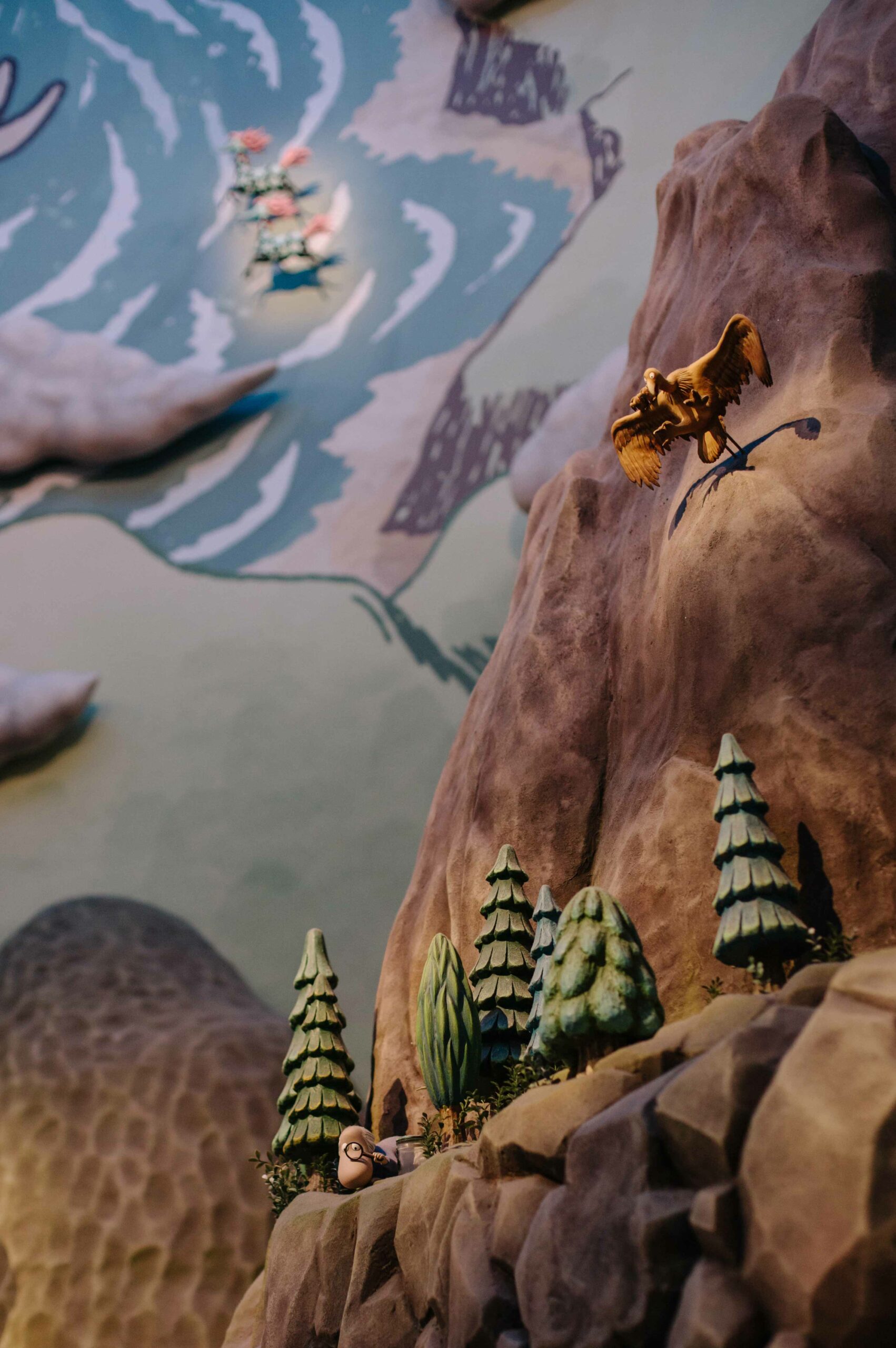

From the gallery, the next stop is the ‘portrait hall’, in which every single named character from Moominvalley is illustrated and identified. The cast of characters that Jansson created was enormous, easily equalling works by J.R.R. Tolkien or Ursula K. Le Guin in their complexity, depth, and breadth of lore.
From here, your path winds through several more rooms. The first includes profound meditations on the nature of Moominvalley as a utopian concept, considering its origins in Jansson’s war-torn reality and the escape it offers both adults and children from the harsh realities of everyday life. Next, you can visit a replica of Moominpappa’s study, loosely based on Jansson’s working space during her time as the primary Moomin comic illustrator. Lastly, a gallery corridor is dedicated to Tove Jansson’s life outside of the Moomins, focusing on her work as a painter and author, and her time spent on Klovharu island with her life partner, Tuulikki Pietilä (who was, and remains, one of Finland’s most influential graphic artists).
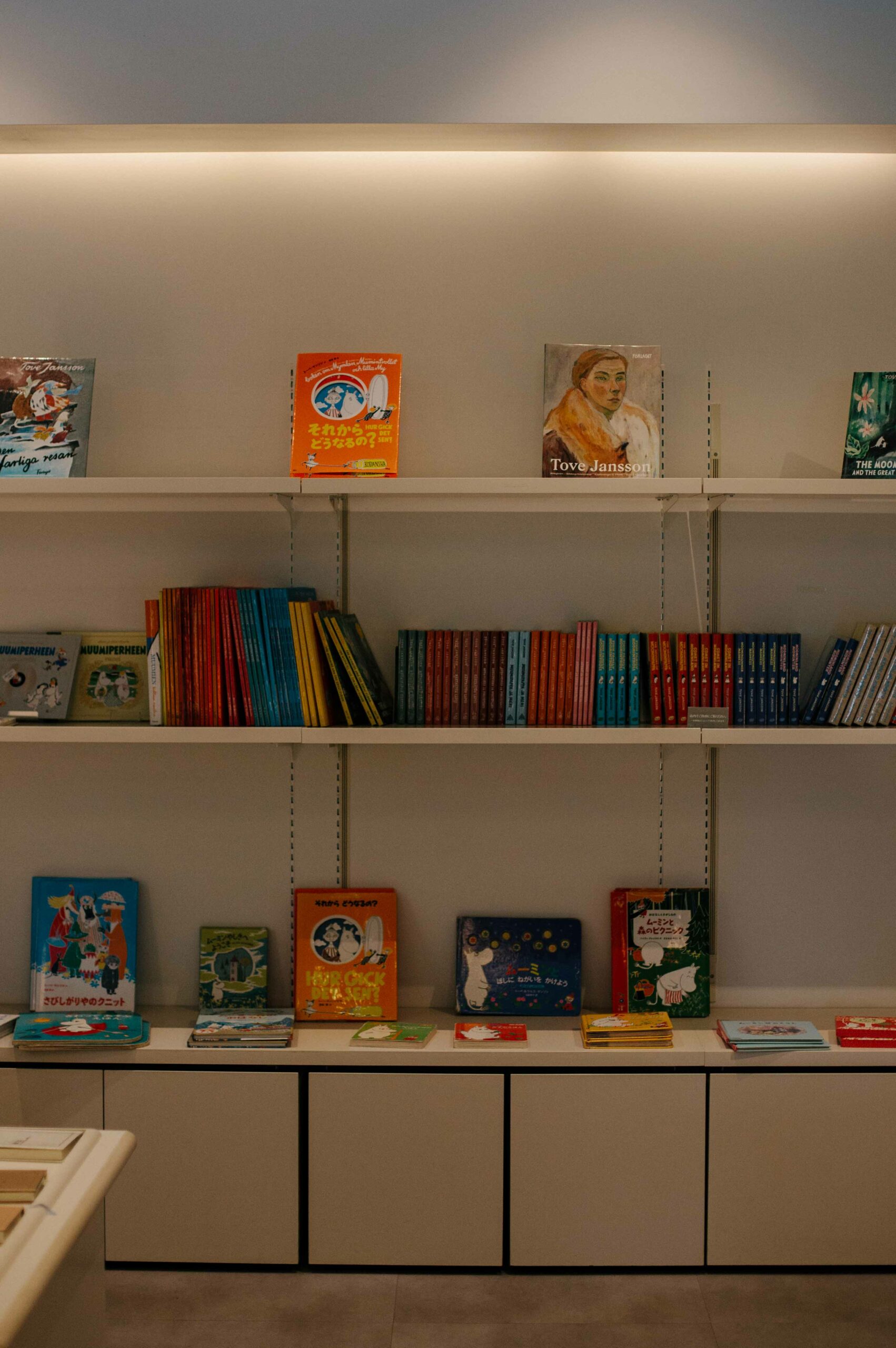
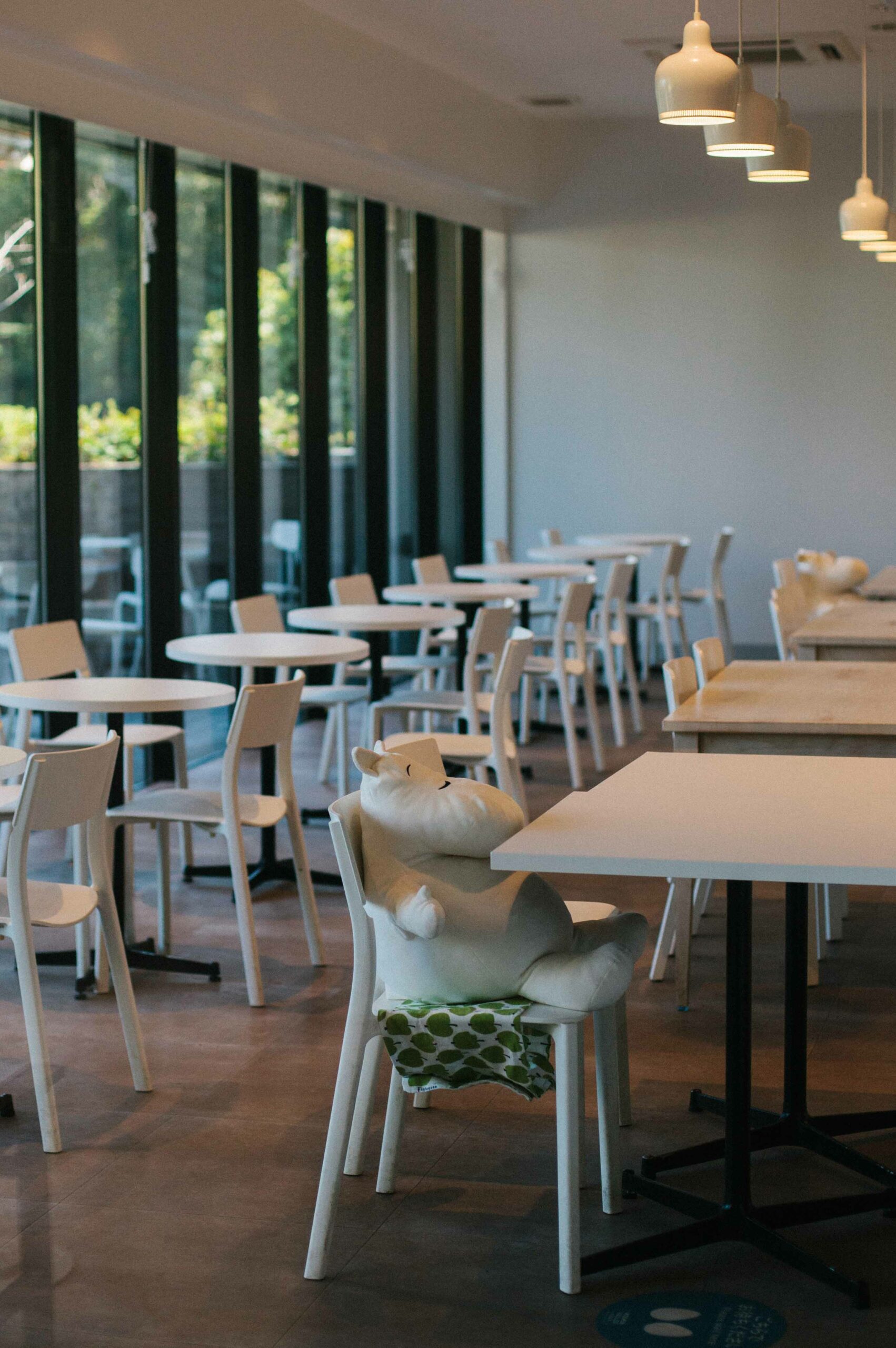
The crowning glory of the museum space is a three-dimensional diorama, housed in a circular glass tower spanning two floors at the far end of the building. The complexity of this towering model is immense, and it features every single Moomin character – from Comet In Moominland’s Garnet Dragon, to Mrs Fillijonk, ratbag Stinky and a fleet of ocean-bound Hattifatteners. You’ll want to spend hours with your face pressed up against the glass, naming every character from Jansson’s work, made famous by the 1990s ‘Moomin’ TV series.
When you eventually peel yourself away from the giant diorama, be sure to visit the Tove Jansson library, which adjoins a sweets café. It features all editions and versions of the Moomin novels in multiple languages (Japanese, English, Finnish and more), as well as Jansson’s other works: her paintings, illustrations for Garm magazine and her novels for adults. Around the corner is a ‘quiet room’ for parents with infants, including a feeding space and soft relaxation area.
When you’ve had your fill of this fantastic museum and gallery space, it may finally be time to hit the shops. Back outside are two souvenir shops, one of which sells unique Moomin postcards and stationery. On the ground floor of the Kokemus museum is the central gift shop, offering just about anything a Moomin fan could need, including Moomin comics and novels in several languages and a huge range of plush toys, accessories, and snacks.
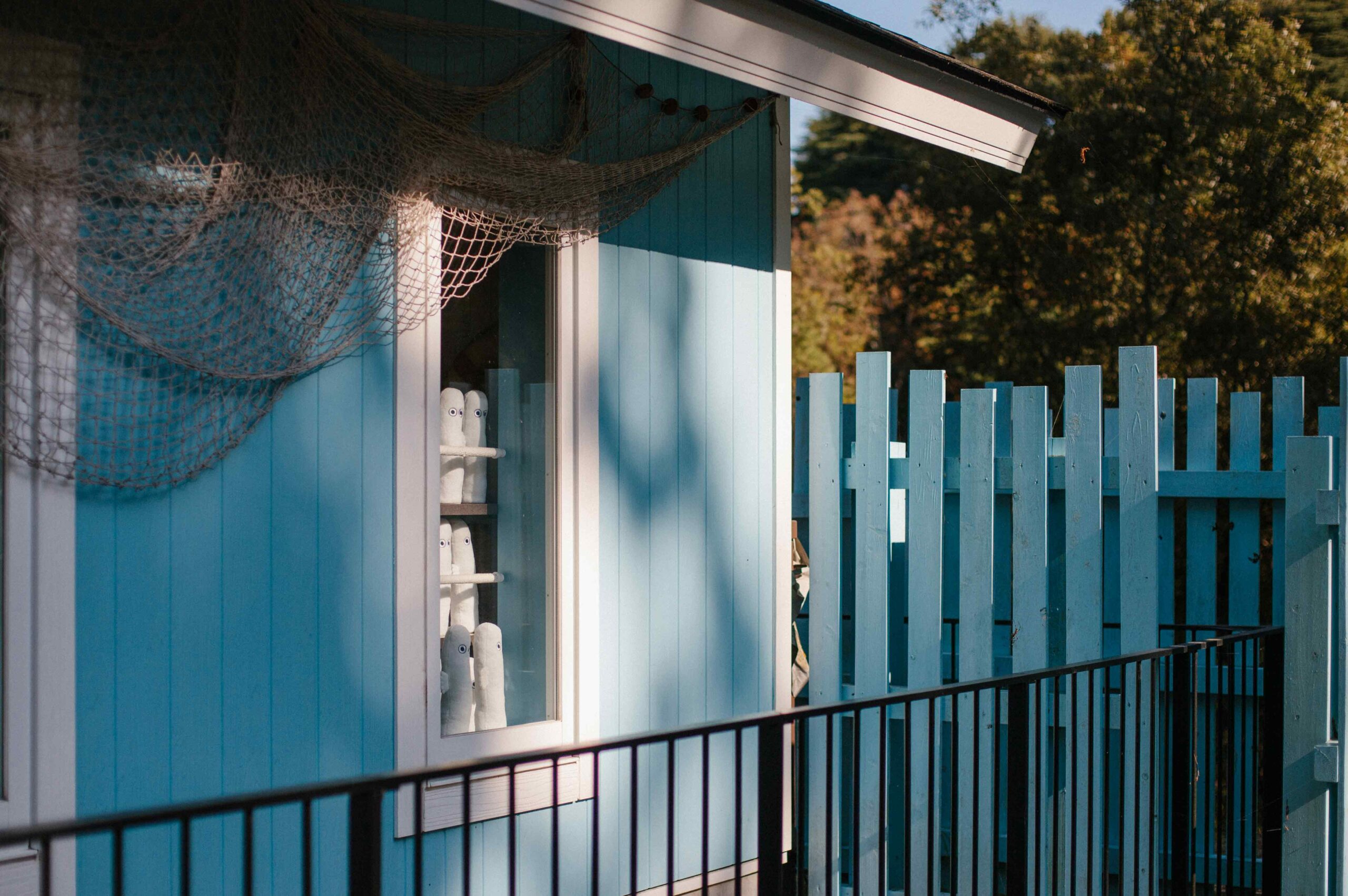
Planning considerations:
All of the on-site food facilities in both Metsä Park and Moominvalley have very limited options for those on special diets. Vegetarians, vegans, coeliacs and those keeping Halal or Kosher will want to bring their own food to the park, as many menu items contain traces of gluten, shellfish and pork by-products.
Access:
Using public transportation, ride the Seibu train line from Tokyo’s Ikebukuro station. The ‘Seibu Ikebukuro Line Limited Express’ train takes 40 minutes and costs ¥1090, departing every 15 minutes.
Exit Hanno station by the ‘North Exit Bus Terminal’ and board the Number 10 bus, which will take you all the way to Metsä Hanno’s entrance, as detailed in this map.
A useful map of Moominvalley Park is available here. Paper maps are also available for free from the Moominvalley Park itself.
Name: Moominvalley Park at Metsä Village
Address: 327-6 Miyazawa, Hanno, Saitama 357-0001
Open: 10:00am – 5:00pm on weekdays, 10:00am – 6:00pm on weekends.
Admission: ¥ 3600 for an adult day ticket (kids’ price: ¥2400).
Website: https://metsa-hanno.com/en/
Post by Japan Journeys.



